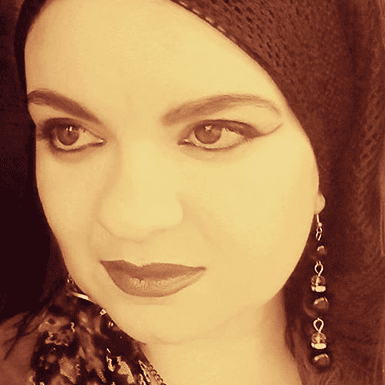Since the detention of teenage Palestinian activist Ahed Tamimi by Israeli security forces, social media has erupted in a frenzy calling for her release. Her constant defiance of Israel’s occupation has made her instantly recognisable, prompting the state authorities into an arrest which should increase international scrutiny of how it treats minors who are exercising their legitimate right to self-determination against colonial rule.
There is no doubt that the 16-year-old’s arrest, as well as Israeli incitement leading to concerns about her personal safety while in jail, will promote her as a symbol of Palestinian resistance. Thus, how to manage the symbolism associated with Ahed Tamimi is imperative, if her struggle and personal ordeal are to be constructive for herself and for Palestine.
Israeli Education Minister Naftali Bennett has effectively called for her to be sentenced to life imprisonment, while journalist Ben Caspit is reported by several media outlets to have called for violence against her person, “in the dark, without witnesses and cameras”. Facing such threats, it is vital that Ahed’s detention remains prominent in the media. This, however, must be achieved within the context of her safety, as well as that of other Palestinian children incarcerated by Israel.
Ahed Tamimi: The symbol of the new defiant Palestinian generation
Last August, the head of the Palestinian Commission for Detainees, Issa Qaraqe, stated that 400 Palestinian minors are being held in Israeli prisons. Since Donald Trump’s declaration about Jerusalem three weeks ago, 620 Palestinians have been arrested by the Israelis, including 170 children. There can be several reasons why one individual is propelled to prominence while others are reduced to simple statistics. For all of their families, however, the pain is just as acute.
To activate a successful campaign for Ahed’s release, therefore, it is important to highlight the fact that Israel is targeting Palestinian children. Her visible resistance, recorded on video footage that has gone viral, is a chapter in a wider struggle that involves all Palestinians resisting state and settler violence.
If there is to be some differentiation between one detained minor and the other children held by Israel, the campaign will likely fall into the trap of selective association and media hype. Another consequence of such symbolism can play into the scheming of all the political actors and international institutions that have opted to keep quiet about Ahed’s arrest. The publicity highlights this discrepancy in the context of normalising Israel’s violence, something which is overlooked regularly by the Palestinian Authority and the international community. However, once this dissonance is evaluated, it is also possible to discern a collective silence over the detention of hundreds of other Palestinian children in Israeli jails who embrace the same hopes, aspirations and values as Ahed. The statistics cancel-out individuals forming part of a unified struggle, currently separating them from Ahed in terms of visibility.
#FreeAhed
It is true that the mutating cycle of Israeli state and settler violence spares little time for reflection, but unless Israel’s violent agenda is halted, the creation of new victims with varying degrees of prominence is inevitable. The prominence of one particular individual will fade when another takes precedence. It should be remembered that media hype is not necessarily constructive and there is no correlation with advocacy for human rights.
With the onslaught of available images juxtaposed against reports concentrating on numbers, it is easier to associate the struggle with the individual, rather than the individual with the struggle. If campaigning for Ahed marginalises the lives of other children in Israeli jails, the activism will be emulating the trend of choosing a symbol to the point of exploitation. Since Ahed Tamimi’s resistance was not carried out in isolation, the voices clamouring for her release must reflect her stance.
The views expressed in this article belong to the author and do not necessarily reflect the editorial policy of Middle East Monitor.

![17-year-old Palestinian Ahed Al-Tamimi, appears in court after she was taken into custody by Israeli soldiers, in Ramallah, West Bank on 25 December 2017 [Issam Rimawi/Anadolu Agency]](https://i0.wp.com/www.middleeastmonitor.com/wp-content/uploads/2017/12/2017_12-25-Israeli-court-refuses-bail-for-jailed-Palestinian-teen20171225_2_27748277_29226737.jpg?fit=920%2C613&ssl=1)







